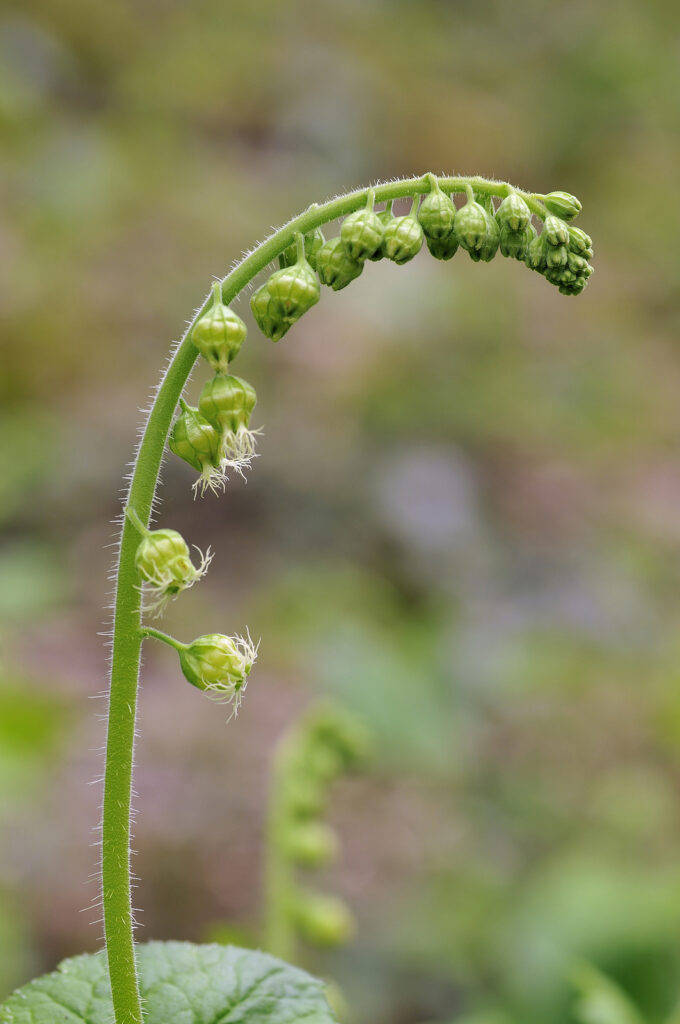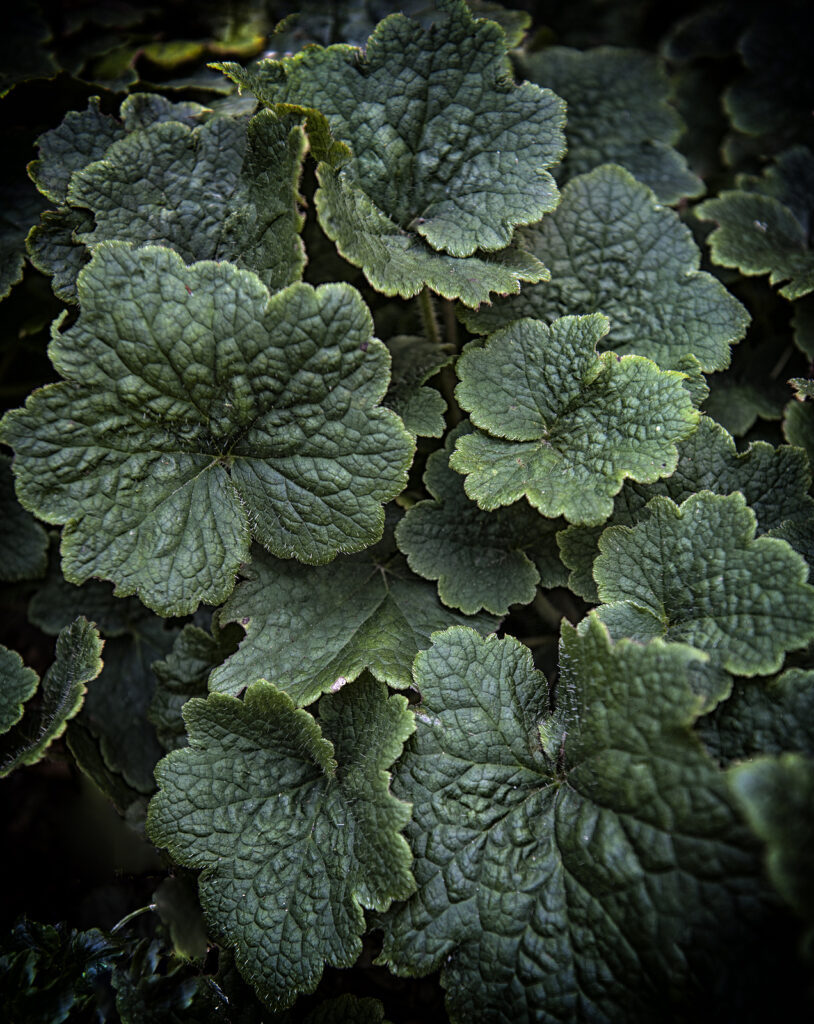Tellima – commonly called Fringe cups– is a rosette-forming herbaceous perennial that bears small, bell-shaped, white to greenish-white flowers from spring to midsummer. Tellima’s basal leaves are heart-shaped or triangular to kidney-shaped.
Tellima grows best in moist, humus-rich soil in partial shade, but Tellima will tolerate dry soil and full sun. It is drought tolerant.
Tellima is a good choice as a groundcover in a shrub border or woodland garden.
Tellima is a genus of one species. It is native to cool, moist woodlands in Western North America.

Get to know Tellima
- Plant type: Herbaceous perennial
- Growing zones and range: Zones 5 to 8
- Hardiness: Hardy to Zone 5
- Height and width: 16 to 32 inches (40-81cm) tall and 10 to 12 inches (25-30cm) wide
- Growth rate: Moderate
- Form and habit: Rosette-forming
- Foliage: Mainly basal leaves are heart-shaped or triangular to kidney-shaped, scalloped or toothed, and 5- to 7-lobed
- Flowers: Small, bell-shaped flowers, with 5 tiny petals, fringed into linear segments, relatively large calyces, and 10 stamens, are borne in terminal racemes
- Bloom time: Late spring and midsummer
- Uses: Groundcover, shrub border, woodland garden, edging for shade garden
- Garden companions: Ferns, blue-leaved hostas, columbine, meadow rue, fringed bleeding heart, dwarf goatsbeard, heart-leaf brunnera, dropwort, purple-leaf coral bells, bugbane, barrenwort, or astilbe
- Common name: Fringe cups
- Botanical name: Tellima
- Family name: Saxifragaceae
- Origin: Western North America
Where to plant Tellima
- Plant Tellima in partial shade; will tolerate full sun.
- Plant Tellima in moist, humus-rich soil; will tolerate dry soil.
- Topdress Tellima with 1-2 inches (2.5-5cm) of compost every fall or very early spring.
- Tellima does not do well in wet soil, high humidity, and heat, especially when combined, or with poor drainage.
When to plant Tellima
- Set container-grown Tellima in the garden in spring or autumn.
- Sow Tellima in containers in a cold frame as soon as ripe or in spring.
- Tellima self seeds freely.
Planting and spacing Tellima
- Space Tellima 12 inches (30cm) apart.
- Mix compost into the soil when transplanting Tellima.
How to water and feed Tellima
- Give Tellima regular water.
- Feed Tellima with an all-purpose organic fertilizer in spring.

How to care for Tellima
- Deadhead Tellima to keep plants neat, unless self-sowing is important for naturalizing.
Tellima pests and diseases
- Tellima leaves are susceptible to attacks by slugs or weevils; they are otherwise pest-free.
Tellima propagation
- Divide Tellima in spring every four or five years to maintain vigor and renew the soil; they grow by offsets.
Tellima varieties to grow
- Tellima grandiflora, rosette-forming perennial with hairy, heart-shaped or triangular to kidney-shaped, 5- to 7-lobed, scalloped leaves, 2-4 inches (5-10cm) long. From late spring to midsummer, erect, hairy stems bear terminal racemes, to 12 inches (30cm) long, of 15-30 white to greenish white flowers, to .4 inch (9mm) long, with greenish white calyces. To 32 inches (80cm) tall and 12 inches (30cm) wide. North America (Alaska to California).



